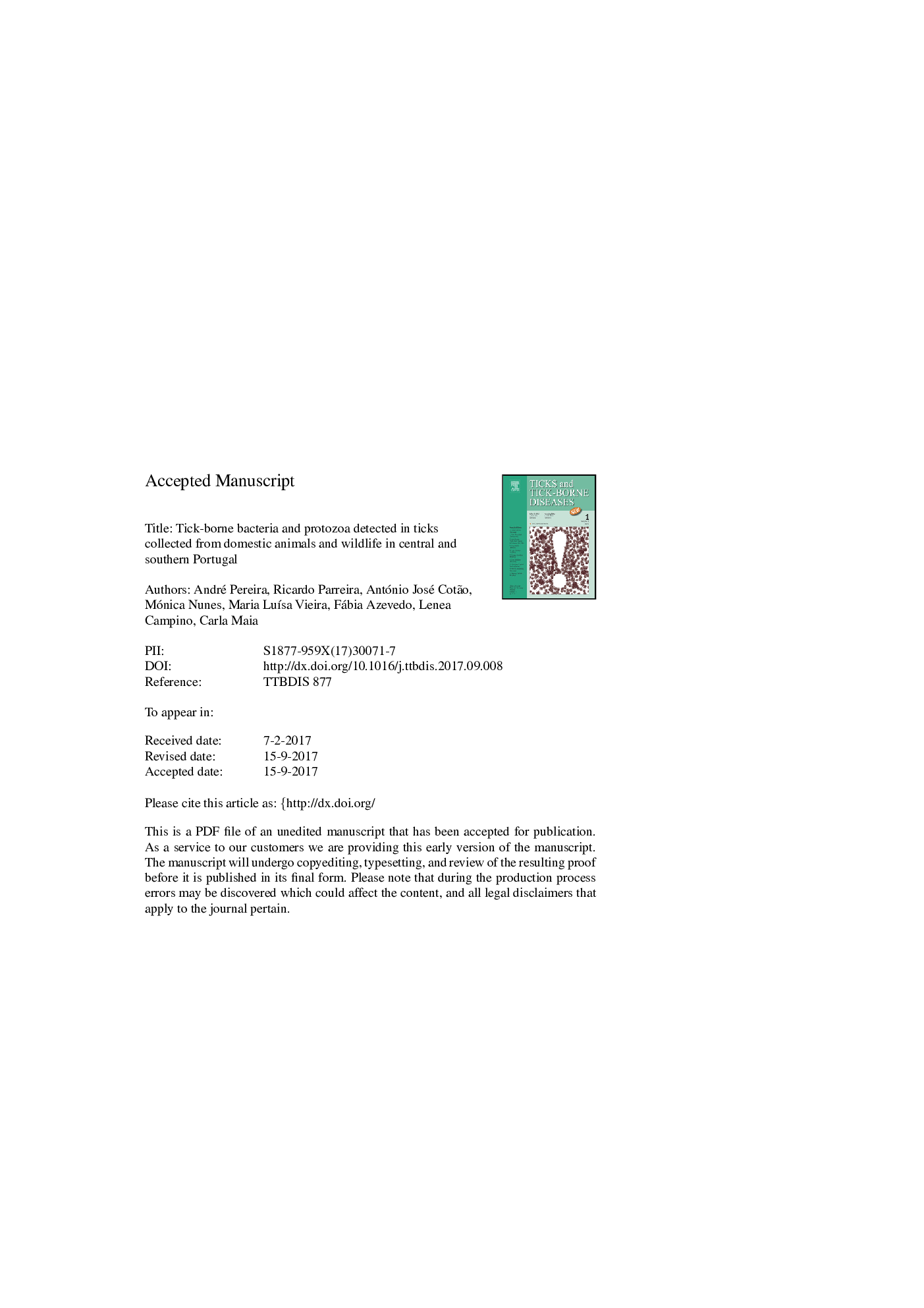| Article ID | Journal | Published Year | Pages | File Type |
|---|---|---|---|---|
| 8507444 | Ticks and Tick-borne Diseases | 2018 | 39 Pages |
Abstract
Ticks are vectors of many human and animal pathogens. The aim of this study was to screen bacteria and protozoa from ticks infesting domestic animals and wildlife collected in central and southern Portugal. A total of 593 ticks, comprising 465 (78.4%) adults, 122 (20.6%) nymphs, and six (1.0%) larvae, were collected from 283 hosts of 25 different species (4 domestic and 21 wild). Overall, the analysis of DNA extracts prepared from ticks collected from hosts of 11 different species in the districts of Castelo Branco, Portalegre, Lisboa, Setúbal, Beja and Faro, revealed the presence of genomic sequences from Anaplasma sp., A. ovis, Babesia sp., relapsing fever-like Borrelia sp., Ehrlichia spp., Rickettsia aeschlimannii, Ri. helvetica, Ri. massiliae, Ri. raoultii, Ri. slovaca, Candidatus Ri. barbariae, Theileria annulata and T. ovis, in specimens of Dermacentor marginatus, Hyalomma lusitanicum, Hy. marginatum, Rhipicephalus bursa and Rh. sanguineus sensu lato. The obtained results suggest the circulation of a wide variety of infectious agents, some of zoonotic concern, in hard ticks from Portugal. Further studies should be conducted to better characterize (both genetically and phenotypically) the putative novel microorganisms detected, both in what regards their potential pathogenity towards vertebrates, and to assist the implementation of effective control strategies for the management of ticks and human and animal tick-borne pathogens.
Related Topics
Life Sciences
Agricultural and Biological Sciences
Animal Science and Zoology
Authors
André Pereira, Ricardo Parreira, António José Cotão, Mónica Nunes, Maria LuÃsa Vieira, Fábia Azevedo, Lenea Campino, Carla Maia,
